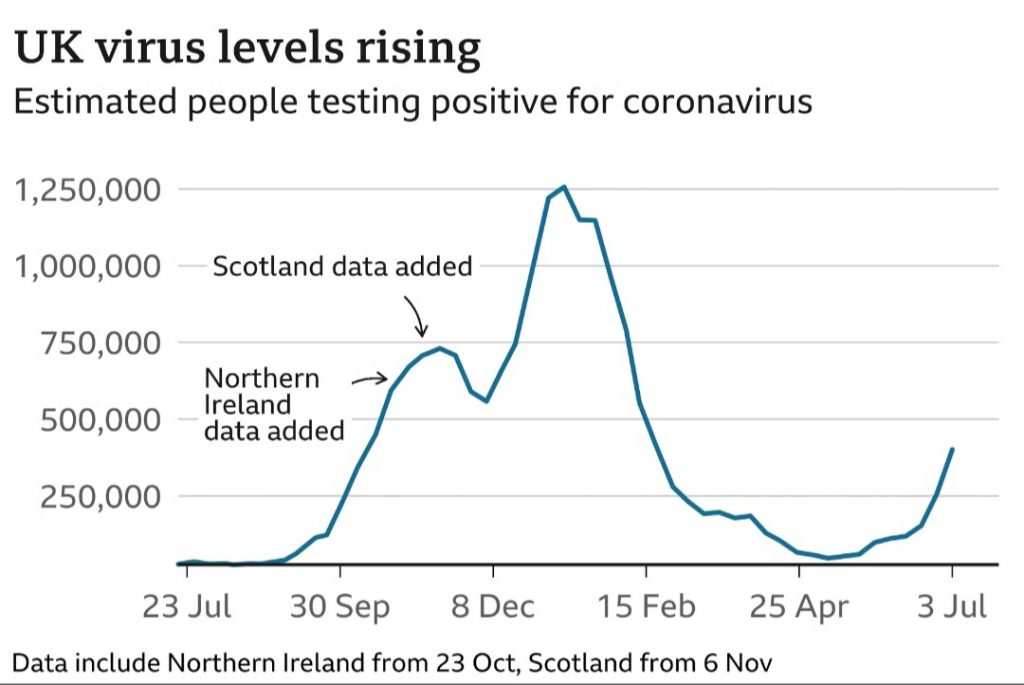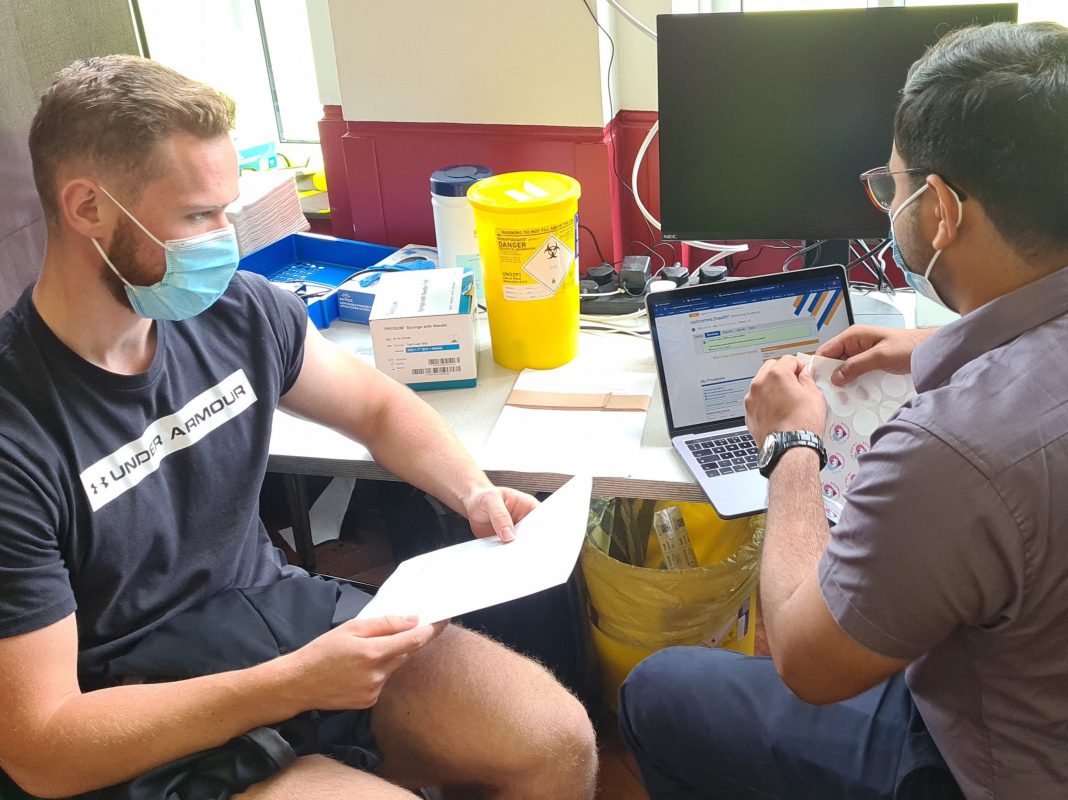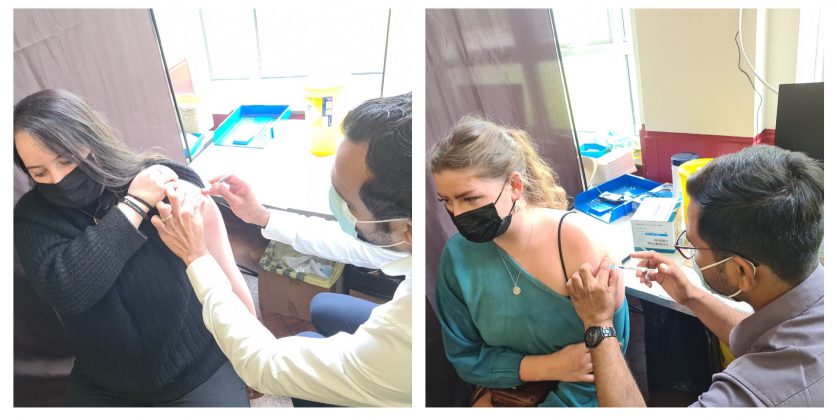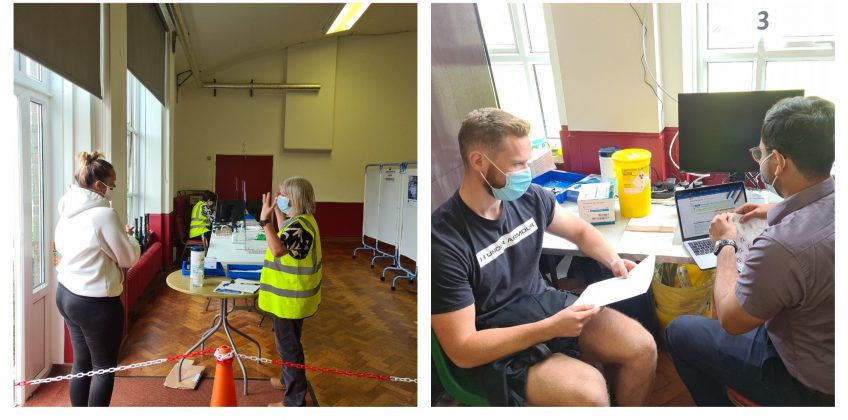This week, in common with other vaccination centres, numbers of the 18 plus age group coming to Rye for vaccine have fallen off. We are not quite clear why this is, but we are working with the NHS Clinical Commissioning Group to encourage more young people to come forward. The Rye Centre is continuing to welcome “walk ins” and “bring a friend”. For the latter, if you want to be accompanied then bring someone who needs a jab and we will vaccinate both!
The Rye centre is now delivering second doses of Pfizer for those who had their first over eight weeks ago. You might read that some centres are offering second doses after periods of less than eight weeks but Rye is adhering to the present NHS guidance. However, this might change and in any case if there is a good clinical reason, exceptions can be made on a case by case basis.
Patients are continuing to book via the National Booking Site, selecting the Rye option. Individuals should choose Rye on the National Booking Site, but decline other locations on offer.
We continue to see many who are anxious or needle phobic. As everyone is encouraged to have the vaccine, those with concerns should mention them on arrival so that we can provide the most caring environment for the experience.
It is expected that the most vulnerable will be offered a third booster jab from September. This will have to be coordinated with winter flu injections. Any decision to vaccinate the 12 to 17-year-old group is unlikely to be recommended by government experts.
Road map will move to “expectations and recommendations”

With sharply rising infections – parts of Kent and Hastings are seeing sharp rises – government experts describe this as the rising third wave and support their view with dramatically rising data. Against this backdrop, the Prime Minister has set out what “Freedom Day” on July 19 might look like. He has emphasised that it was vital to proceed now with relaxations, but that “caution” will be needed because “this pandemic is not over”. He argued that delays in the road map could see the relaxation of measures coincide with winter flu, putting the NHS under significant renewed pressure.
Some experts see this strategy a gamble. The World Health Organisation has said that it is “too early to be talking about massive relaxation or freedom”. The chair of the British Medical Association has said: “It’s irresponsible and frankly perilous, that the government has decided to press ahead with plans to lift the remaining Covid-19 restrictions on 19 July.”
Despite the warnings, many cannot wait to see the end of legal restrictions on social contact and business. Yet to be fully explained are precisely what “expectations and recommendations” there will be after July 19. One measure that is the source of much debate is the need to wear face coverings in crowded indoor spaces and public transport. Government advice for face coverings and social distancing after July 19 is below:
- when travellers are entering the country, between disembarking and border control;
- those self-isolating should continue to socially distance from others, particularly if they have had a positive test;
- in hospitals, care homes and medical facilities, to keep infection prevention and control measures in place.
There are emerging requirements for face coverings on some public transport.
Much has been made by government of the need for “social responsibility.” Critics say that, given the risks, this should be a collective, not individual responsibility and that at the least, there should be clear guidance. Many businesses have suggested that unless rules are mandatory they probably would not be introduced.
One group that does have serious concerns is the estimated 3.7 million clinically vulnerable. The government has issued advice to this group as:
- Limiting close contact;
- Ensuring that your “bubble” has been fully Covid-19 vaccinated, but be aware that those with weak immune systems may have reduced protection from vaccine;
- Avoiding those areas where Covid-19 levels are high in the community;
- Socialising outside where possible;
- Ensuring inside spaces are well-ventilated;
- Continuing to wash hands regularly and to avoid face-touching;
- Continuing social distancing;
- Inviting friends/family to take regular lateral flow tests.
NHS waiting lists
The Health Secretary has reported that some 5.3 million people are waiting for routine operations and procedures in England. The waiting list has risen from 3.5 million to 5.3 million this week and might go as high as 13 million in the winter months. One measure being considered to reduce waiting lists is to supplement NHs provision of some treatments by private healthcare. Some “virtual” surgeries by video are also set to continue.
Long covid
This week, there are more reports of measures to tackle “long covid” described by doctors at Imperial College as a “complex condition” with a range of symptoms lasting long after initial infection. These include fatigue, breathlessness, headaches and muscle pain. Research is under way to establish the factors that apply and in an attempt to develop treatments.
Image Credits: Anthony Kimber , ONS .





